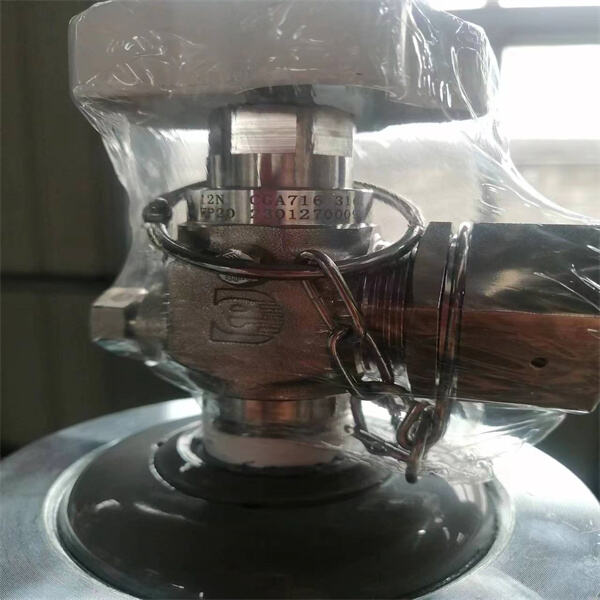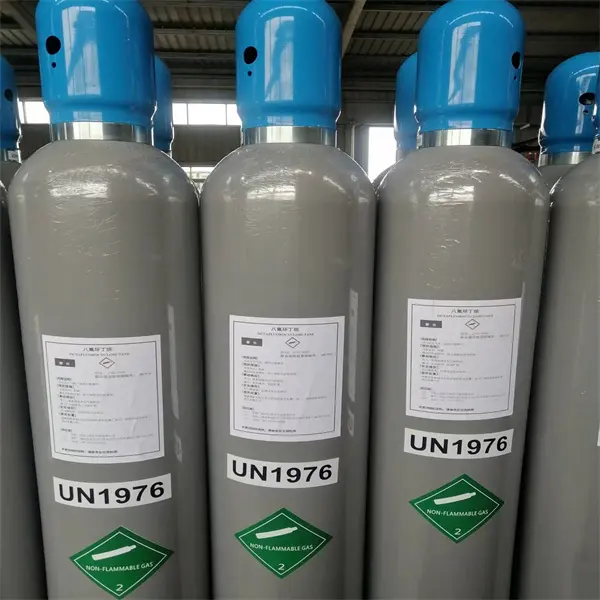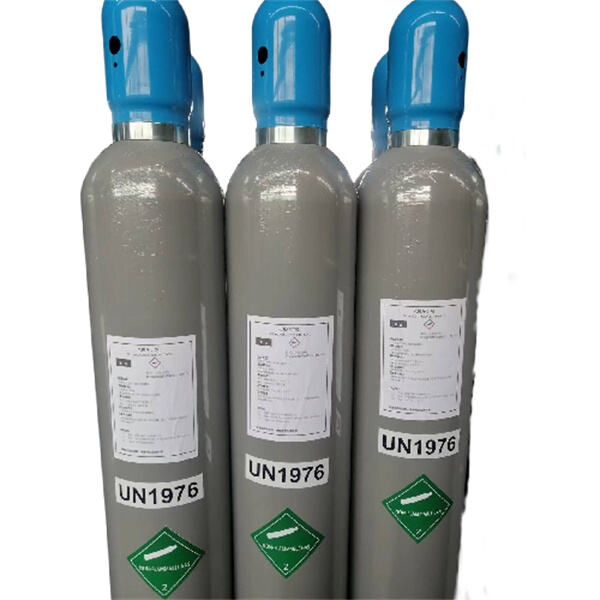Polovodiče jsou všude, od vašich chytrých telefonů a osobních počítačů po jakýkoli jiný druh elektronického přístroje. Musí být vyrobeny prostřednictvím konkrétního procesu a použít množství plynů. Následující část zdůrazňuje přehled o různých typech plynů používaných pouze jednou průmyslovou oblastí a jak tyto vyspělé látky slouží k vytváření věcí, na které skutečně spoléháme. Různé typy plynů používané v průmyslu polovodičů Polovodiče jsou tvořeny pomocí komplexní série procesů, jako je gravování, nanesení a čištění. Různé vlastnosti a aplikace těchto plynů se liší podle konkrétního použití nebo atmosférických podmínek, ať už jsou využívány u dodavatelů průmyslových plynů, specializovaných dodavatelů plynů pro polovodiče nebo v laboratoři, poskytují široké spektrum vhodné pro všechny s kritickými vlastnostmi potřebnými ke splnění úkolu uspokojivě. V současnosti chceme představit několik hlavních plynů používaných v procesech výroby materiálů. Silan SiH4: Tento plyn je bezbarvý a rovněž je znám jako důležitý siliciemi založený elektronický materiál. Je znám svou velmi dynamickou reakčností a rychle reaguje s kyslíkem a vodou, aby vytvořil oxid křemíku SiO a vodík. Silan lze použít k umístění siliciemi založeného materiálu, jako je SiNx, buď rychle, nebo při relativně nízké teplotě. Prvek dinitrogen N2: Tento plyn je inertní a brání oxidaci. Je neustále vyráběn a potřebný pro vyprázdnění zařízení v údržbě, aby bylo odebráno překotné nasycení O2 a vlhkostí. Takový plyn také slouží k usnadnění a dopravě aktivit dalších plynů, funguje jako nosný plyn v depozici niklu a plazmově podpořené depozici niklu.
Vodík (H2) - Vodík se používá jako redukční plyn odstraňováním nepůvodností z materiálů. V výrobě polovodičů je to důležitý krok pro několik procesů, jako jsou anealing a čištění. Navíc vytváří metalické brány, které jsou nezbytné pro výrobu pokročilých CMOS zařízení.
Stabilní kyslík (O2/O) - zadávejte listy a specifické doby dodání atd. Plyn O, zatímco se kyslík používá ve mnoha plazmových procesech, jako jsou etching a strip/ash o ]]>], slouží také jako reaktant pro oxidaci kovů na SiOx nebo pro pasivační oxidace povrchu kovů.
Chlor (Cl2): Chlor je žlutý nebo červený kouřící, pachující netečný prvek v kapalné formě. Tento plyn, který je velmi reaktivní s kovovými materiály na bázi křemičitanu, oxidem křemíku a mnoha kovy jako je hliník, má široké uplatnění v etchingu struktur polovodičů.
Skutečnost, že se plyny používají při výrobě polovodičů, vedla k vytvoření vysoce věrné elektroniky, jak produkují rozšířené schopnosti výroby polovodičů. Plyny mají také několik významných použití a výhod v polovodičovém průmyslu.
Plyny jako silan, amoniak a dinitrogen jsou používány k nasazování oxidu nebo nitridu síry, které budou tenkými vrstvami polovodičů. Nasazování.
Etching (gravování): Používá se k selektivnímu odstraňování nechtěných materiálů nebo vzorů z polovodičů pomocí plynů jako chlor, fluor a kyslík.
Procesní plyny: Vodík a dinitrogen jsou potřebné pro provoz zařízení na čištění polovodičů (purifikace) za účelem snížení nepuret, které mohou ovlivnit výkon zařízení.
Vyplachování: Jeden z jeho hlavních účelů je, že slouží jako vyplachovací plyn během údržby zařízení, což odstraňuje kyslík a vlhkost ze systému a udržuje materiály v lince volné.

Jako důsledek tomu není vidět konec hledání stále sofistikovanějších materiálů a procesů, když se polovodičový průmysl dále vyvíjí. Vylepšené plyny jsou nezbytné pro nadcházející pokroky v oblasti polovodičů. Následující jsou některé z těchto vyspělých plynů používaných při výrobě polovodičů:
Fluorovodíky: Důvodem, proč jsou fluoridní plyny vhodné pro výrobu nejmodernějších výkonových schémat, je jejich agresivní a selektivní reakce jak na etčení (odebrání částí), tak na deponaci (přidávání částí).
CO2 - Inertní plyn používaný pro aplikace jako je spalování, CVD a čištění.

I když by to mělo být vnímáno jako krok vpřed ve výrobě polovodičů, pouze kvůli novým dodacím systémům dostupným dnes. Výrobci neustále hledají způsoby, jak zvýšit účinnost, snížit množství odpadu a zvýšit bezpečnost. Některé z nejnovějších pokročilých plynů a chemických dodacích systémů jsou uvedeny právě níže.
Systém dodávky plynu (pro plyny, které přesně ovládají malé množství plynu nebo tekutin potřebných v polovodičích)
Zdroj: Pokročilé systémy na mokrou čištění ploch s použitím ozonové plazmy a peroxidu vodíku pro nejúčinnější metody odstraňování nepůvodních látek z materiálů pro polovodiče.

Polovodičové plyny mohou stimulovat požadavek na efektivnější elektroniku, ale také představují nebezpečné ekologické rizika. Existují některé programy zaměřené na snížení odpadu a recyklování plynů v polovodičovém průmyslu. Toto je stejné jako to, jak výrobci pracují na zmírnění ekologických obav spojených s polovodičovými plyny;
První a nejpřímější je Snížení odpadu -> Výrobci jsou stále na vyhlídce po možnosti snížit množství odpadu vznikajícího během výroby polovodičů. Věci jako snížení množství chemikálií a plynů používaných, recyklování jejich tam, kde je to možné, nebo vytváření uzavřených cyklů.
Re-cyklování: Cyklické využívání plynů a chemikálií bude ještě jednou klíčovou metodou, která pomáhá snížit environmentální dopady. Vznik odpadu může být mnohem jednodušeji minimalizován výrobcemi, kteří umožňují zotavení, očišťování a recyklování plynů nebo chemikálií používaných během výroby.
Souhrn: Plyn je nezbytný pro výrobu některých z nejlepších elektronických zařízení. Výrobci se snaží zdokonalit jak pokročilé plyny, tak i řešení jejich dodávek, aby byly optimalizovány procesy, snížena množství odpadu a zajistěna bezpečnost komunity. Poloprovođákářský sektor se také ubírá směrem ke snížení spotřeby plynů a celková environmentální stopa těchto plynů vedla v posledních letech k zahájení mnoha kampaní zaměřených na udržitelnost.
AGEM rozumí, že každý zákazník vyžaduje různé věci v oblasti speciálních plynů, jako jsou kalibrační plyny. Nabízíme přizpůsobená řešení, která splňují konkrétní potřeby našich klientů. Pokud potřebujete určitou množství čistoty, velikost válcové nádrže nebo balicí možnosti, AGEM může spolupracovat s vámi na přizpůsobení svých produktů vašim přesným požadavkům. Tento stupeň přizpůsobení zajistí, že získáte nejlepší válec kalibračního plynu pro vaše aplikace, což zvýší celkovou účinnost a výkon. Rozsah produktů AGEM není omezen pouze na kalibrační plyny. Katalog AGEM zahrnuje uhlovodíky, halokarbonské látky, chemické plyny a vzácné plyny. Můžete být si jisti, že AGEM má ten konkrétní druh plynu, který potřebujete.
Uniky v plynách používaných v výrobě polovodičů je velkým problémem. Kontrolu uniků provádím alespoň pětkrát, abychom zajistili kvalitu. Naše firma nabízí kompletní produkční a testovací linku a aplikaci přísné kontroly kvality a dokonalého systému prodejních služeb, aby zákazníci obdrželi nejvyšší kvalitu produktů a široké spektrum služeb. Naším cílem je poskytovat vynikající zákaznickou podporu a vysokou kvalitu, čehož jsme hrdí. Naše vysoce kvalifikované týmy jsou vždy připraveny vám pomoci a zajistit, abyste dostali nejlepší služby ke své plné spokojenosti. Naše služby 24x7 nás odlišují. Jsme tu pro vás každou hodinu denně, po celý týden.
AGEM nabízí širokou paletu kryogenních válců pro chlazení nadmrazových tekutin a plynů, jako je kapalný kyslík a argon. Dají se také použít pro uchování oxidu uhličitého, dvojoxidu uhličitého, dusiku a směsi dusíku s kyslíkem. Používáme dovozené ventily a přístroje, abychom zajistili maximální výkon. Užívejte zařízení na úsporu plynu a dávejte přednost využití přeťaženého plynu ve fázovém prostoru plynu. Dvě bezpečnostní ventilace poskytují pevnou záruku pro bezpečnou operaci. Nabízíme širokou škálu kryogenních válců, které mohou obsahovat nadmrazové tekutiny používané v každodenním životě. Celkové objemy: 80L/100L/175L/195L/210L/232L/410L/500L/1000L Pracovní tlak: 1.37MPa/2.3MPa/2.88MPa/3.45MPa Návrhová teplota vnitřní nádrže: +196 Návrhová teplota vnější nádrže: 20°C+50°C Izolace: Vakuum s vícevrstvou izolační vrstvou Ukládací médium: LO2, LN2, LArLCO2, LNG
AGEM působí v Tchaj-wanu již více než 25 let. Máme rozsáhlou know-how v oblasti výzkumu a vývoje a můžeme nabídnout jedinečné odbornosti v oblastech speciálních, hromadných a kalibračních plynů v rámci 6 různých regionů. Tchaj-wan - Kao-hsiung (Sídlo, Výzkumné a vývojové středisko) Indie - Mumbaj, Vadodara, Coimbatore, Pune, Bengálúr, Dillí Čína - Wuhan Střední východ - Dubaj (Spojené arabské emiráty) & Království Saúdská Arábie Spojené království - Cambridge Řešení s plynem, které nabízíme, zahrnují technické poradenství, montáž a spuštění, testování vzorků, balení a dopravu, návrh kreslení a výrobu.